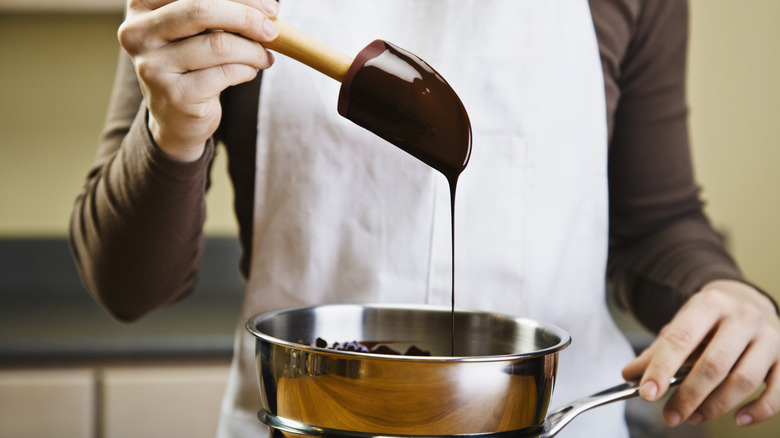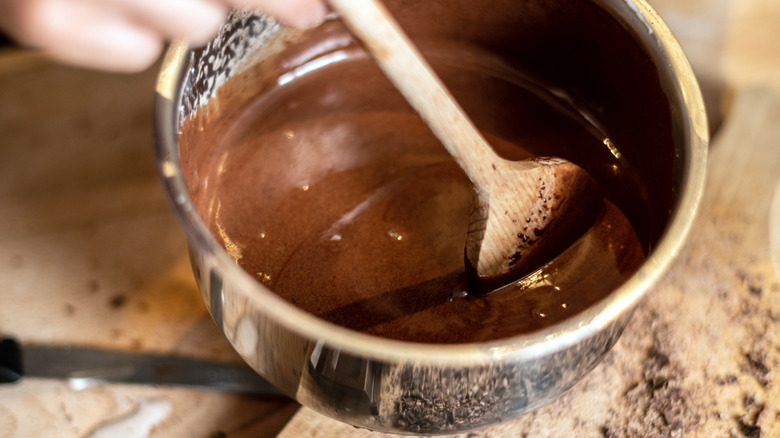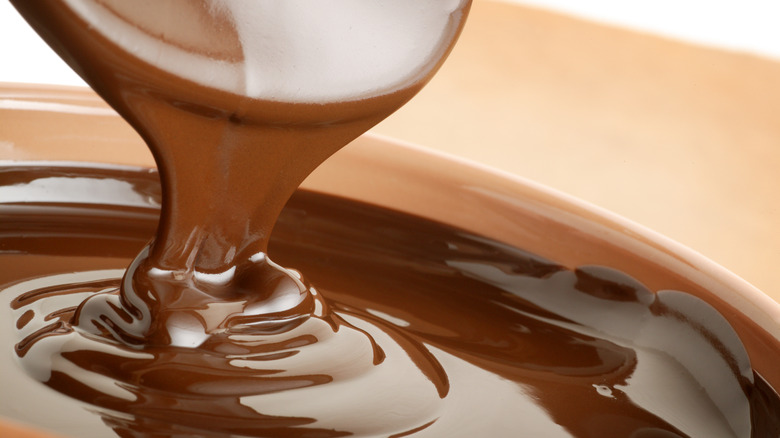The Utensil Mistake You Might Be Making When Melting Chocolate
Chocolate is a delicious base for plenty of desserts; it can be used as an ingredient in a dish or simply be enjoyed on its own. But if you've ever melted chocolate yourself, you might have run into one unfortunate problem: clumping. There are a few reasons why your perfectly smooth chocolate suddenly starts seizing or forming unsightly clumps, and one of them could have everything to do with the type of spoon you're stirring the chocolate with. Pro tip: Avoid a metal spoon at all costs.
Chocolate is temperamental. Although the process of melting the chocolate is easy enough, it doesn't take much to cause this sweet treat to turn on you; stirring it with a cold spoon could shock the chocolate, which happens when a hot item suddenly hits a cold surface. Your best bet is to avoid metal and go for something like a wooden spoon or rubber spatula instead.
Using a metal spoon might shock your chocolate
You might have heard of thermal shock, which happens when a surface that's too hot makes contact with a surface that's too cold, causing breakage; the same concept can happen with chocolate. Warm or hot chocolate that hits an ice-cold metal spoon can immediately cause the chocolate to seize up, leaving your rich, smooth dish full of unwanted clumps. Since wooden spoons and rubber spatulas are much warmer to the touch at room temperature, it's best to use these because the chocolate won't react negatively.
There are other reasons why your chocolate might seize up besides just the cold temperature. Liquid, such as water, is a big one. If you're melting chocolate using a double boiler, ensure that absolutely no water makes its way into the chocolate. It has to do with science, but put simply, the ingredients that make up chocolate will separate if another liquid is introduced after the chocolate has already been melted. In this case, also make sure you're not rinsing the spatula with water before stirring up the chocolate.
How to melt chocolate for the smoothest texture
Even if you're using the proper utensil to stir the chocolate, there are still ways you can mess it up. To melt chocolate well, start by roughly chopping the chocolate; this will help the melting process along since the pieces will be so much smaller. To melt it on the stove, fill a pan with a little bit of water, and heat it on medium until it simmers. Place a heat-resistant bowl over the top, or the other half of the double boiler if using one; the heat will slowly melt the chocolate. Stir it frequently to keep it melting evenly and prevent the chocolate from burning.
Never melt chocolate directly on the bottom of a pan over an open flame or electric coil; the chocolate will burn too easily. As for what type of chocolate, the more fat and cocoa it has, the more easily it will melt, so keep that in mind. Dark chocolate melts quicker than milk chocolate, which could impact what kind you decide to use.


